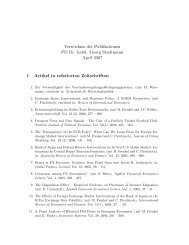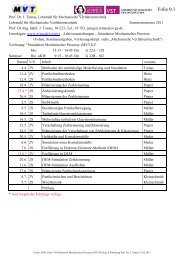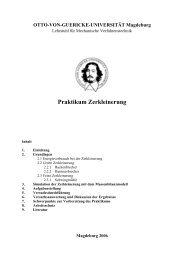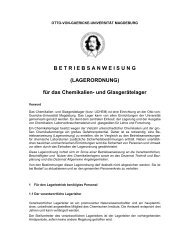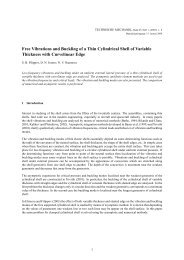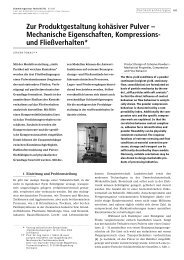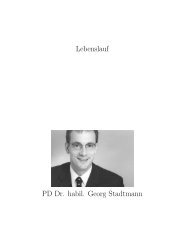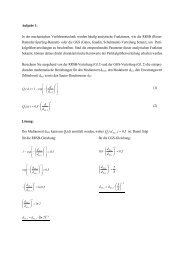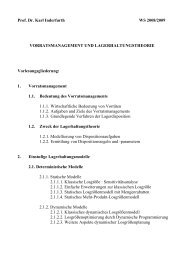Mechanics of nanoparticle adhesion â A continuum approach
Mechanics of nanoparticle adhesion â A continuum approach
Mechanics of nanoparticle adhesion â A continuum approach
Create successful ePaper yourself
Turn your PDF publications into a flip-book with our unique Google optimized e-Paper software.
34J. TomasFC⋅r1 1H,sls 1,2H0,Ra= ⋅ +2 2 26⋅ a F= 01+ 58.14⋅r1,2⋅ RMS / λr ( 1+ 1.817⋅RMS / aF= 0 )(77)The first term in brackets represents the contact interaction <strong>of</strong> the particle withan asperity and the second term accounts for the non-contact interaction <strong>of</strong> theparticle with an average surface plane. This <strong>approach</strong> describes stiff nanoscaleroughness as caps <strong>of</strong> asperities with their centers located far below the surface.For example, RMS roughness <strong>of</strong> only 1 or 2 nm is significant enough to reducethe theoretical <strong>adhesion</strong> force F H0 by an order <strong>of</strong> magnitude or more [115].Greenwood [50, 80, 81] and Johnson [67] described the elastic and plastic deformations<strong>of</strong> random surface asperities <strong>of</strong> contacts by the standard deviation <strong>of</strong>roughness and mean pressure.The intersection <strong>of</strong> function (72) with abscissa (F H = 0) in the negative <strong>of</strong> consolidationforce F N (Fig. 8), is surprisingly independent <strong>of</strong> the Hamaker constantC H,sls :F =−π⋅a ⋅h ⋅p⋅κ⋅ 1+NZ , F=0 r12f A ,≈−π⋅a ⋅h ⋅pF=0 r12, fr/ h12 , r12 ,( 1+ 2⋅h/ ar )12 , F=02(78)This minimum normal (tensile or pull-<strong>of</strong>f) force limit F N,Z for nearly brittlecontact failure combines the influences <strong>of</strong> the particle contact hardness p f ≈ (3–15)⋅σ f (σ f = yield strength in tension, details in Ghadiri [117]) for a confinedplastic micro-stress field in indentation [116] and the particle separation distribution,which is characterized here by the mean particle roughness height h , andthe molecular center separation a F=0 . Obviously, this value characterizes also thecontact s<strong>of</strong>tness with respect to a small asperity height h r as well, see Eq. (34).This elastic–plastic model (Eq. (72)) can be interpreted as a general linear constitutivecontact model concerning loading pre-history-dependent particle <strong>adhesion</strong>,i.e., linear in forces and stresses, but non-linear regarding material characteristics.But if one eliminates the center <strong>approach</strong> h K <strong>of</strong> the loading and unloading functions,Eqs. (58) and (64), an implied non-linear function between the contact pull<strong>of</strong>fforce F H,A = – F N,Z at the detachment point A is obtained for the normal forceat the unloading point F N = F N,U :r 1,2



